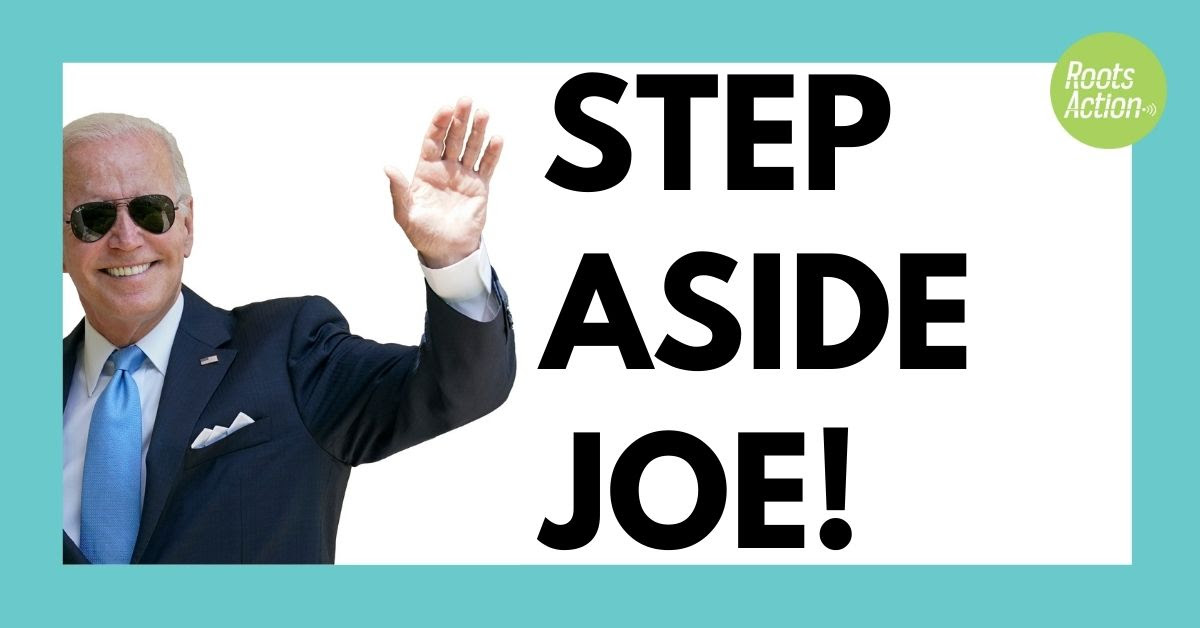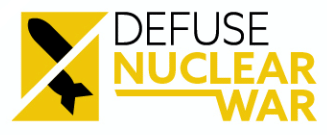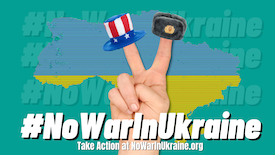This Easter weekend, while President Trump was at his luxurious hotel in Mar-a-Lago in Florida, thousands of persons hoping for asylum in the U.S. were waiting in tents, shelters and detention facilities in cities on both sides of the U.S.-Mexico border wall.
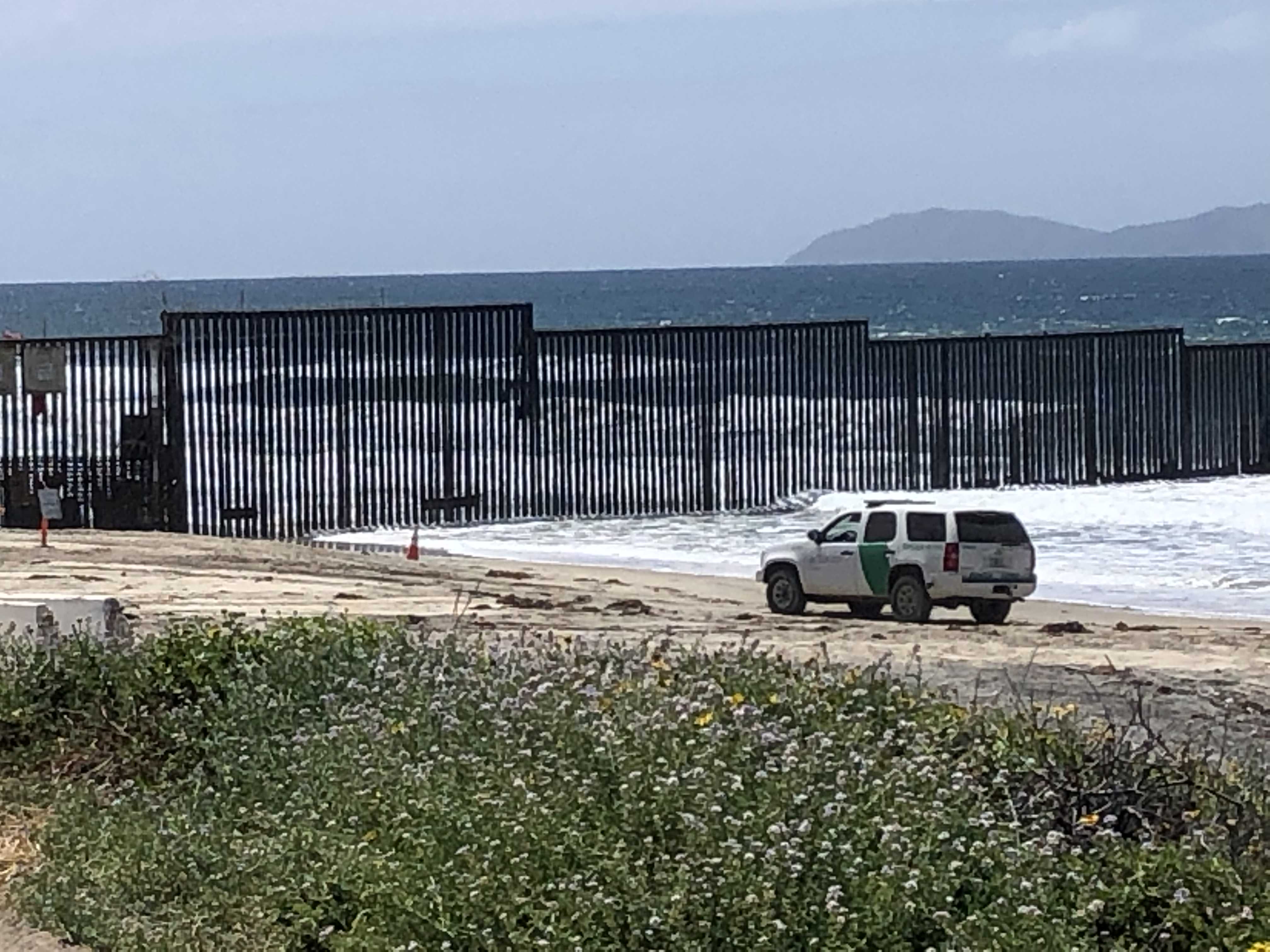
Photo by Ann Wright
South of San Diego, California, at the International Friendship Park on the beach walled off from Mexico, Easter religious services were held for families split apart by the fence and by U.S immigration policies. Reverend John, a Methodist pastor, was on the U.S. side of the fence and Roberto was on the Mexico side. Two women and their families who are awaiting in Mexico for their U.S. asylum interview numbers to be called, sang for the crowd. Deported U.S. veterans served food to the group on the Mexico side of the fence.
To get to the U.S. side of the International Friendship Park, one must park one and one-half miles inland from the Pacific Ocean and walk on a rutted road out to the beach. This weekend yellow, red and blue spring flowers covered the marshlands and small hills on the way out to the beach. At the end of the road is the International Friendship Park, deserted except for Border Patrol vehicles and families who have walked, many pushing baby strollers with the family’s latest member, a mile and a half to visit through a fence with relatives on the Mexican side.
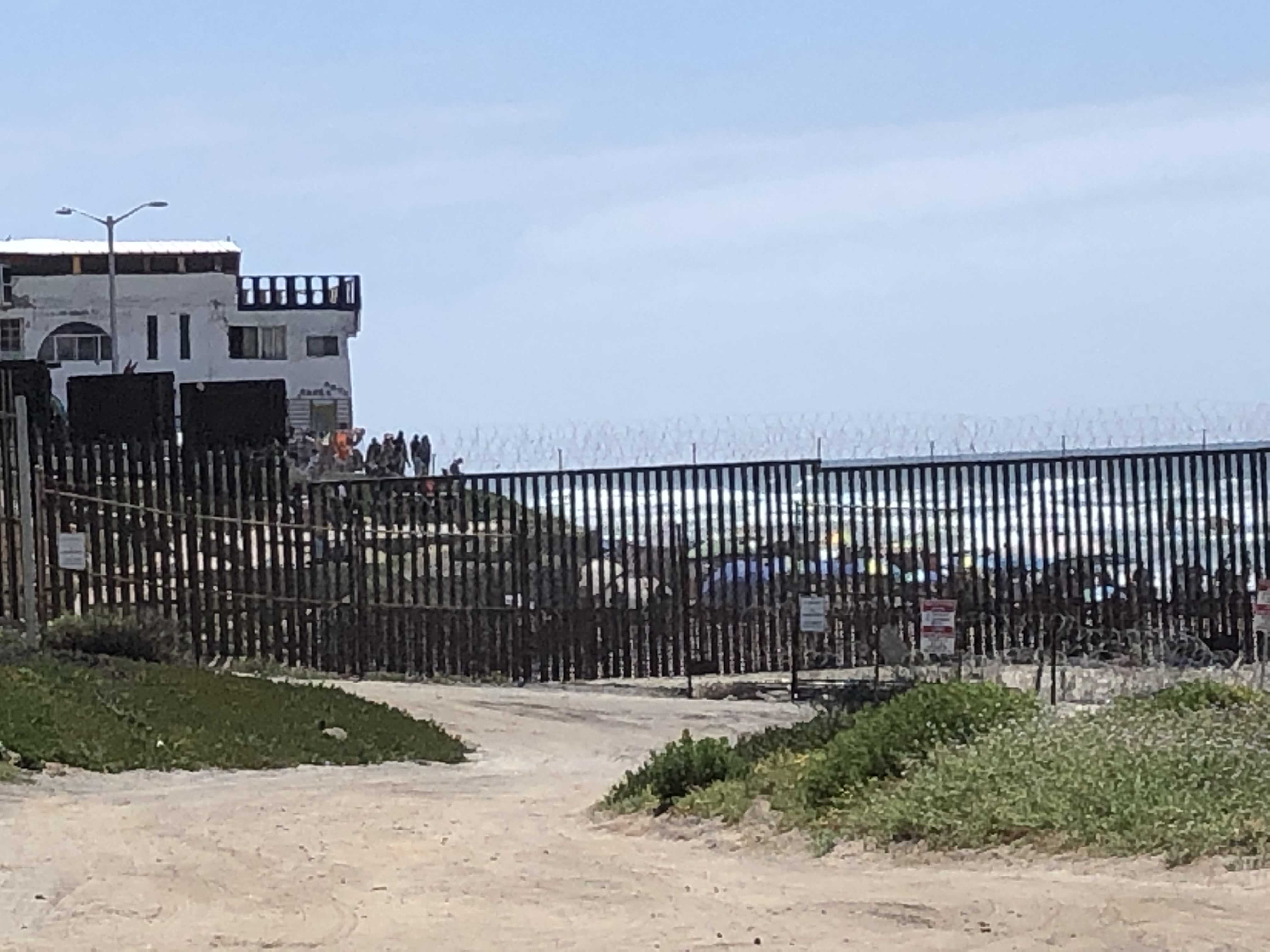
In stark contrast to the deserted U.S. beach, on the Mexican side of the International Friendship Park, one can drive directly to the park and the beach which is filled with swimmers and beachcombers and others enjoying the restaurants along the beach.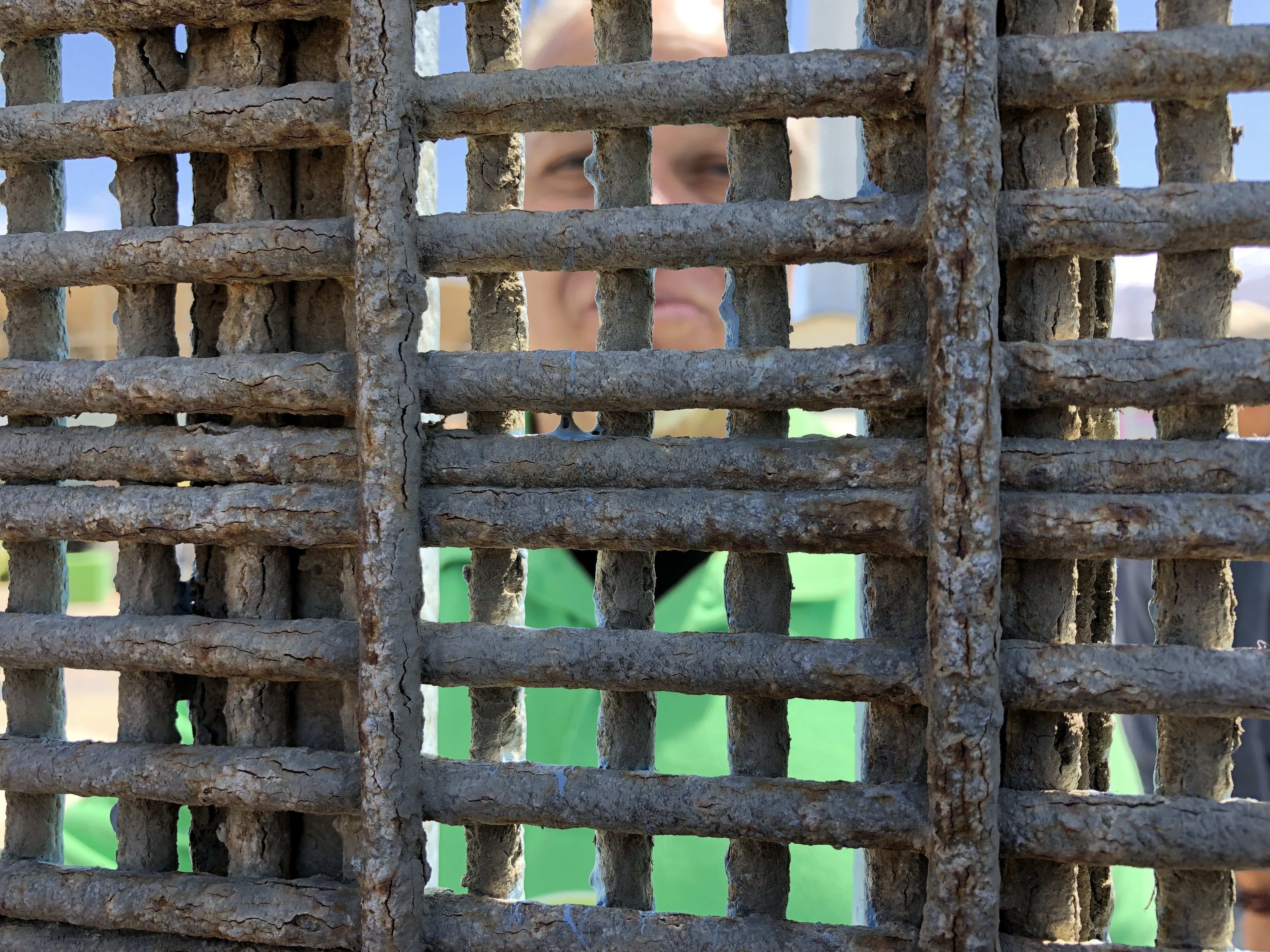
Photo by Ann Wright
The U.S.-Mexico border at the Pacific Ocean is composed of two very tall fences. The fences are about thirty feet apart with sensors and cameras to alert U.S Border Patrol that someone has climbed the first fence and is in the no-mans before the second fence. Each Sunday, U.S. Border Patrol opens up an area called Friendship Circle to give families an opportunity to communicate through the fence with relatives on the other side. Only ten people at a time are allowed to enter a gate in the second border wall that gives access to the first fence. The area designated for families to get next to the fence is about one hundred feet long and the wall is at least 20 feet high. The slatted fence has several layers of “mesh,” or tightly woven steel rods, welded to it, allowing only the tip of one’s little finger to be touched by people on the other side. One can talk through the mesh, but the person with whom one is speaking looks pixilated because the holes in the mesh are so small.
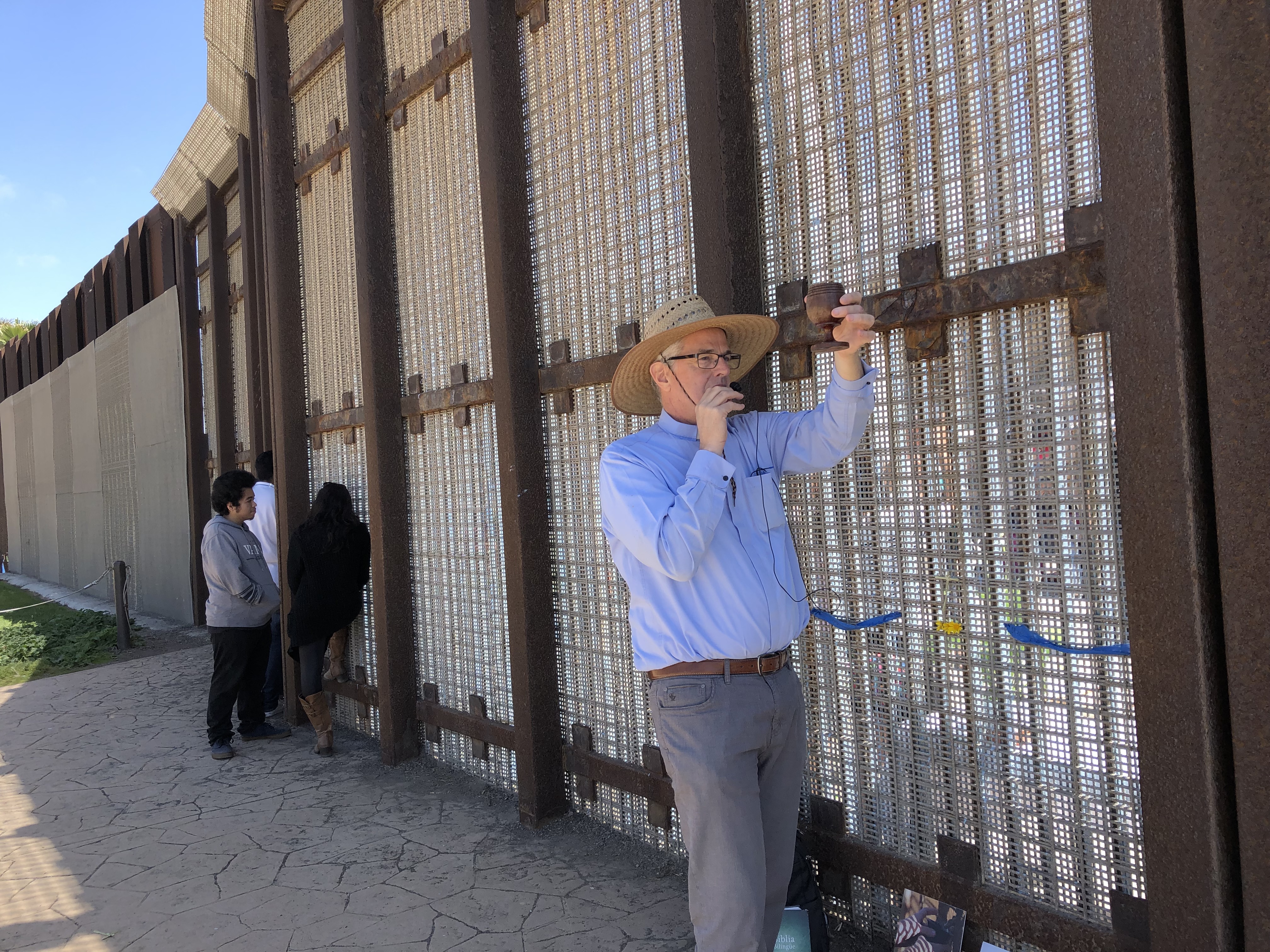
Two families on the U.S. side were talking with persons from their extended family from Honduras who were waiting in Mexico for their numbers to be called by ICE for interviews. One family has been waiting for weeks for their number to be called for an interview in San Diego. In the meantime, they are living in shelters in Tijuana.
Reverend John said he had been working for the past twenty-five years with immigrants and refugees both in Mexico and in the United States. He reminded me that large numbers of persons have been crossing into the U.S. for decades. Each U.S. presidential administration believes that fences and walls will stem the flow of persons to the U.S., but history has proven each president wrong.
Now along the Tijuana border there is a double fence, but people keep coming although most along this section of the border are turning themselves into Border Patrol rather than coming in illegally. Rev. John said that the ease of making phone calls to the families who live in the U.S. allows persons in Central America to find out where jobs are and have promises of housing and employment before they leave their homes. He noted that documenting violence--the beatings, murders, burning of businesses and homes –is much easier now that everyone has a cellphone camera and allows asylum requesters to provide to ICE as evidence of their fear of danger in their home country.
I had been on the other side of the border several days earlier going into Mexico at the Tijuana-San Yisidro crossing. After going through Mexican immigration, one emerges from the fenced border crossing passageways onto a large plaza. Each morning the plaza is filled with lines of people waiting for U.S. Customs and Border Patrol to arrive to give out numbers to persons who want to apply for asylum in the United States. After receiving their numbers, they leave the plaza and a second group begins arriving on the plaza-those whose numbers are anticipated to be called that day by ICE. It may be days or weeks from getting a number before one’s number is called and during that time, individuals and families must find someplace to stay in Mexico. Keeping track of which numbers are going to be called each day is an effort by not only the individuals but of organizations that attempt to help the asylum seekers.
When one’s number is called, the person/family/group is transported into San Diego where a hearing officer makes a preliminary decision on the asylum claim. In a very confusing policy, if the claim is initially accepted to eventually go before a final court, some persons are taken immediately into a detention facility in the San Diego area, a few are released with an ankle bracelet into the U.S. to go to the sponsoring family, but now, in a U.S. policy called “Return to Mexico,” most are returned to Mexico to await the second interview. Since the applicant has no idea which of the options will happen, they take their belongings with them knowing that if they are returned to Mexico, the space in the shelter in which they have been staying may no longer be available if they are returned to Mexico. In a recent article in Vice News, one judge in the U.S. court told an applicant: “If I return you to Mexico, the issue of where you are going (to stay in Mexico) is not before the court.”
In a particularly cruel policy, persons who have received numbers at the Mexicali-Calexio crossing do not have hearings in Calexio, the closet U.S. town, but must travel to Tijuana, two and one-half hours away to be available for the calling of their numbers. Local churches and civic organizations who are lodging the applicants in Mexicali, organize buses and vans to take the applicants to Tijuana to be available for the interviews if the number is called. If one misses the calling of his number, his case will not be heard later.
While in Tijuana, we visited Al Otro Lado, a legal collective with U.S. immigration lawyers, that provides information of what an applicant should expect at the hearing in the U.S. ICE reportedly doesn’t like Al Otro Lado as it is believed that aslyees are coached on what to say to make their claim more believable. The Al Otro Lado lawyers say that most asylees have no idea what to expect in the hearing and they are merely explaining what will be happening during the hearing. Al Otro Lado is one of many organizations that is trying to help make the process of applying for asylum in the U.S. more humane.
To visit one of the organizations providing shelter for asylees, the Deported U.S. Veterans living in Tijuana took Veterans for Peace national president Gerry Condon and me to the Igelsia Embajadores de Jesus, a Catholic church located in a narrow valley outside of Tijuana. The unpaved road leading up the valley to the church had large potholes and is impassible by vehicle during the rains. Valley residents are not affluent and live on the hillsides in wooden shacks. One suspects that some of the asylees perhaps have come from more affluent circumstances than the Mexican citizens who have opened their valley and church to the newcomers.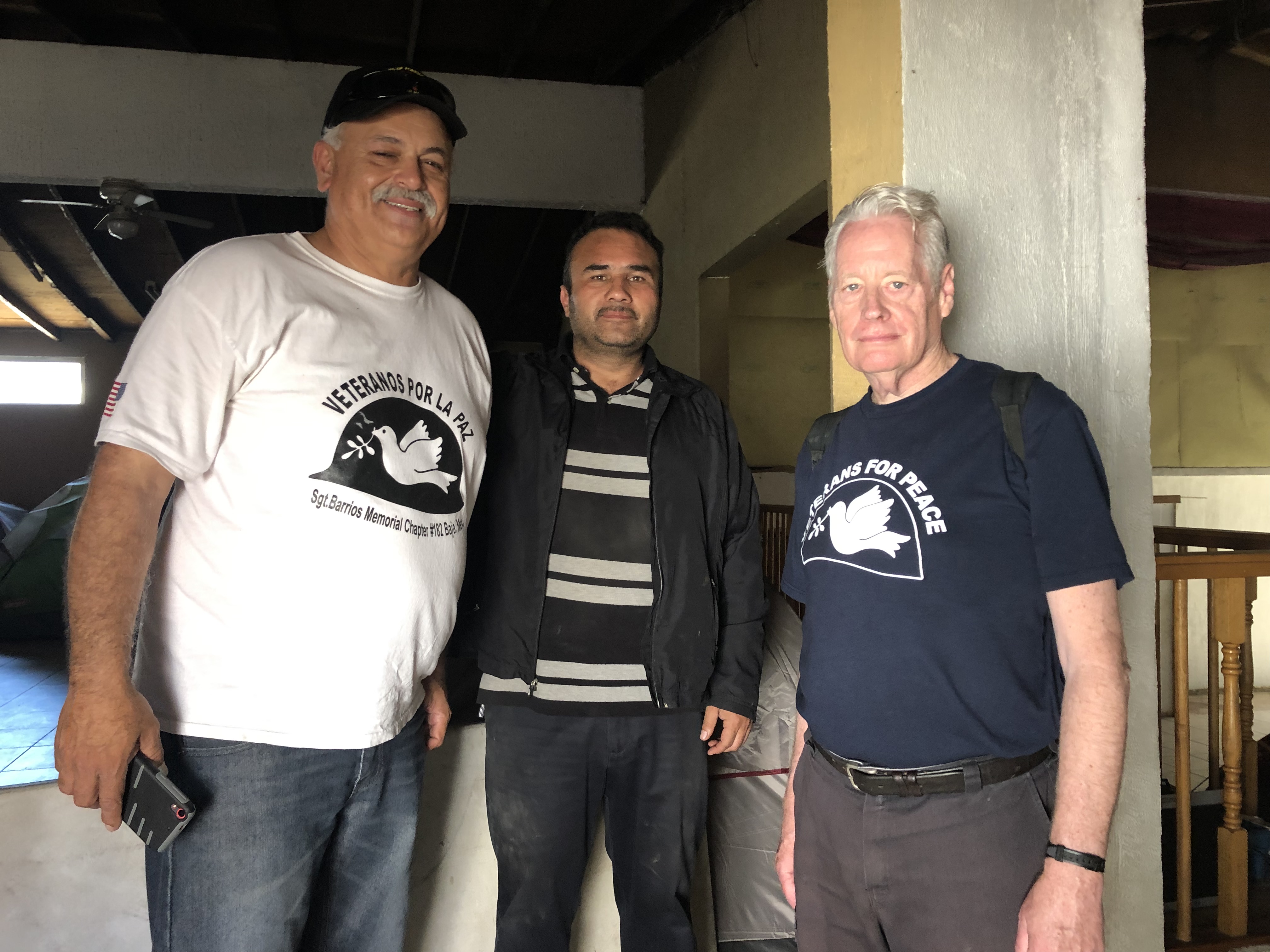
Deported Veteran Hector Lopez, Pastor Banda Gustavo and Veterans for Peace National president Gerry Condon Photo by Ann Wright
Gustavo Banda, the pastor of the church for the past twenty years, said that the church is currently housing 250 people, but has held over 500 at times. Approximately 100 Haitians and 150 Central Americans are living in small tents erected inside the church. Each family has one or two tents depending on the size of the family. Cooking is done by residents—one kitchen is for spicy Haitian food and another kitchen for Central American cuisine. Taking advantage of the government of Mexico’s program of allowing applicants to work while waiting in Mexico, several people have found daily/hourly low paid work. Each morning, they walk out of the valley, up the winding paved road on the last hill that leads up to the four-lane road to Tijuana to get to work. Pastor Banda said that those working proudly contribute what they can to the purchase of food for the kitchens.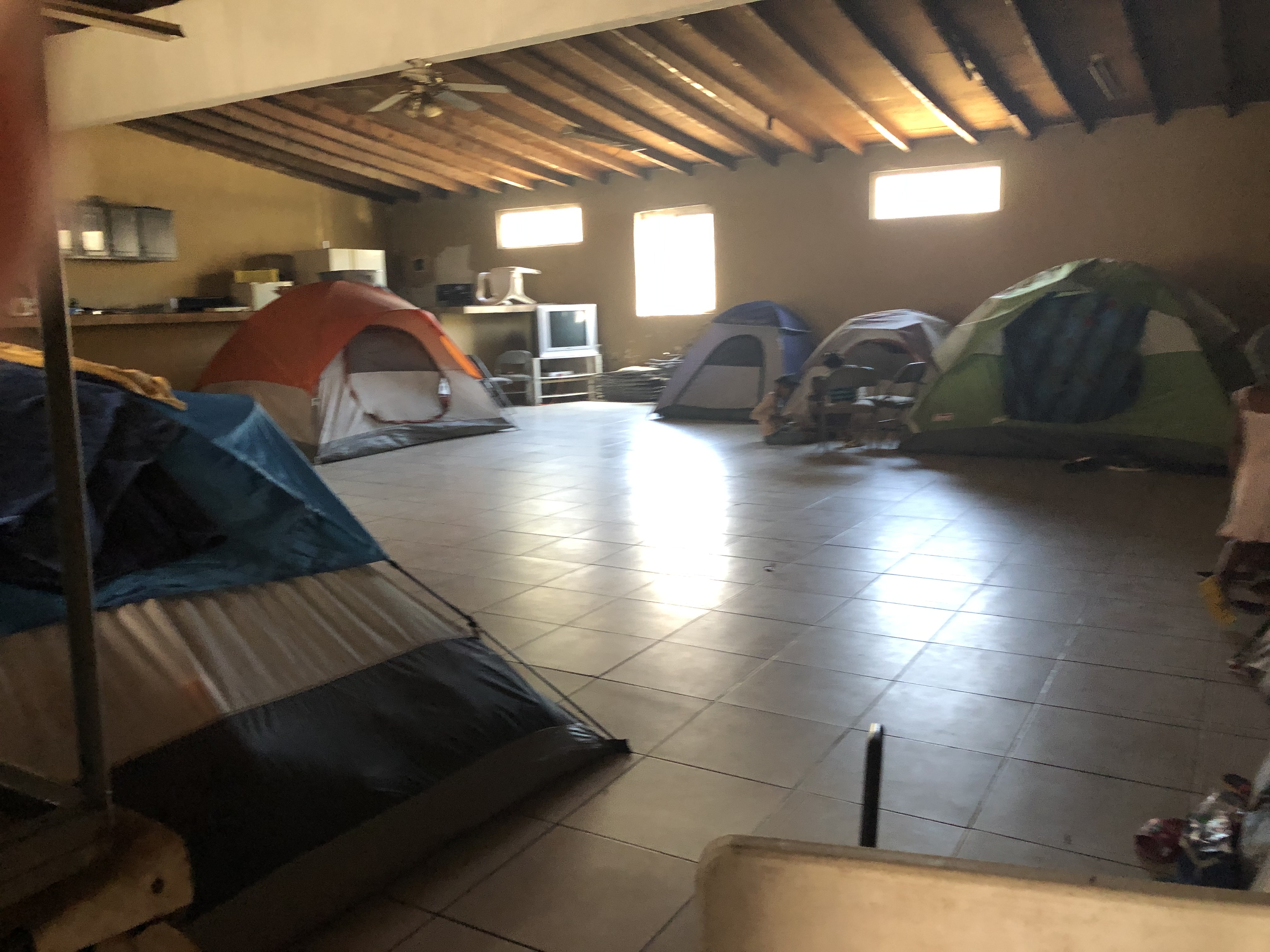
Photo by Ann Wright
However, that is not enough to feed all those living in the church therefore, the church looks for donations to purchase food and water. Our Veterans for Peace national organization made a $1000 donation that the Deported Veterans chapter uses to buy water and food for those housed at the church. While we were at the church, 800 gallons of drinking water to fill the large plastic water tank was delivered and later our Deported Veterans brought 100 pounds of chicken, and bags of rice, beans and vegetables all paid for by VFP. Donations to help with food and water can be made to VFP with a comment “For Deported Veterans Project for food and water for asylees”
On the Mexican side of the border, churches and buildings of other organizations in Tijuana are filled to capacity with persons waiting for their numbers to be called and be allowed eventually to go to the United States.
On the U.S. side of the border, organizations in San Diego have a rapid response team that get daily calls from ICE saying they are releasing people from detention facilities who will need assistance to find a place to stay while they await a judge’s decision to allow them to work while the final adjudication of their case is made—which may take many months.
The detention facilities are overcrowded, frigidly cold and very unfriendly. “I feel like I am trash,” immigrant children say as they describe the conditions in the detention facilities.
In response, a local coalition of nonprofit organizations – known as the San Diego Rapid Response Network, including Jewish Family Service, Safe Harbors and the American Civil Liberties Union of San Diego and Imperial Counties – has provides shelter for asylum-seekers who are typically only in San Diego for 24 or 48 hours before taking Greyhound buses or flying to be reunited with family elsewhere in the U.S.
I had lunch one day in San Diego with a friend who has opened her home to a family awaiting adjudication of their asylum application. The father, mother and teenage son are Jehovah Witnesses from Russia. After waiting for six months in Mexico, they were allowed into the U.S. and put in a detention facility. They were placed with my friend through the Safe Harbors program which has eleven more Russians in two family units they have sheltered. Both parents wear ankle bracelets as they wait for second hearing to determine if they can work in the U.S. while waiting for final adjudication of their asylum case.
ICE has used Safe Harbors as its drop off location for pregnant women or for women who have just given birth in San Diego hospitals. The ministry’s founder Pastor Bill Jenkins said that 24 babies have been born to women seeking asylum living in the church in the past year(2018) — about one every two weeks. “Sometimes I wonder if I’m running a shelter or a maternity ward,” Jenkins said. Despite San Diego being located at one of the busiest border crossings in the United States, Christ Ministry Center and Safe Harbor is the only long-term shelter in San Diego for persons seeking asylum.
Last autumn while in McAllen, Texas, we witnessed buses arriving from detention facilities in south Texas. Catholic Charities meets each bus that arrives each afternoon with persons who have been released from the detention facilities. The buses let released detainees off three blocks from the bus station and they are told to “walk straight ahead for three blocks.” Volunteers greet them at the bus station and help get them get bus tickets to the cities of their sponsors. If they arrive so late in the afternoon or evening that the bus to their destination has already left, Catholic Charities houses them in a nearby shelter for one night. All persons 16 or over have to wear ankle “bracelets.”
In Albuquerque, New Mexico, I spoke several weeks ago with the consortium of volunteer agencies that meet every bus that arrives from detention facilities in New Mexico and from some facilities in Texas. Agencies in border cities in Texas are overwhelmed so ICE transports some released detainees to New Mexico where they arrange for transportation to their sponsors. Albuquerque agencies may be given 12-24 hours notice by ICE of arriving buses, but sometimes not.
The bottom line is that a large number of persons seeking asylum are crossing the U.S.-Mexico border. The U.S. judicial system is unable to handle such a number with the current number of judges. Persons are in detention facilities for months before finally being patrolled into families and communities that are willing to accept them. The strain on government and community resources at the border are at a breaking point.
About the Author: Ann Wright served 29 years in the U.S. Army/Army Reserves and retired as a Colonel. She was a U.S. diplomat for 16 years and worked in U.S. Embassies in Nicaragua, Grenada, Somalia, Uzbekistan, Kyrgyzstan, Sierra Leone, Micronesia, Afghanistan and Mongolia. She resigned from the U.S. Government in March 2003 in opposition to the U.S. war on Iraq. She is the co-author of “Dissent: Voices of Conscience.”

